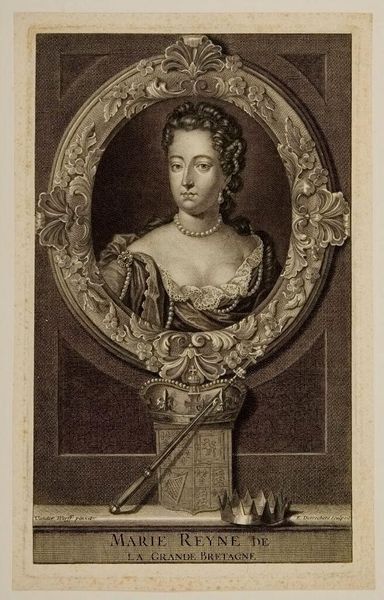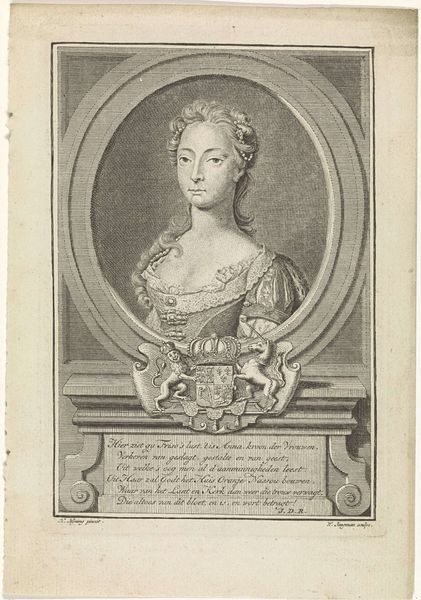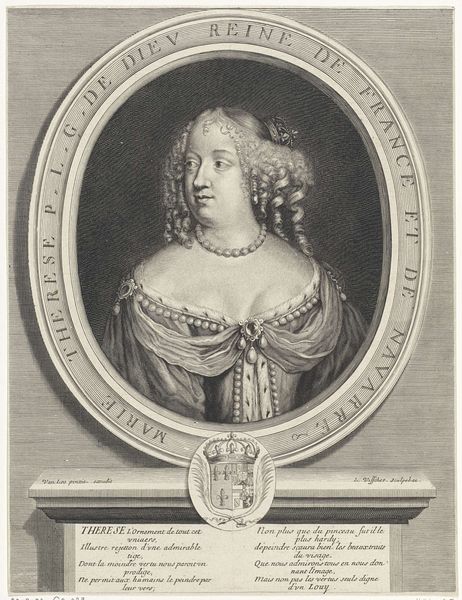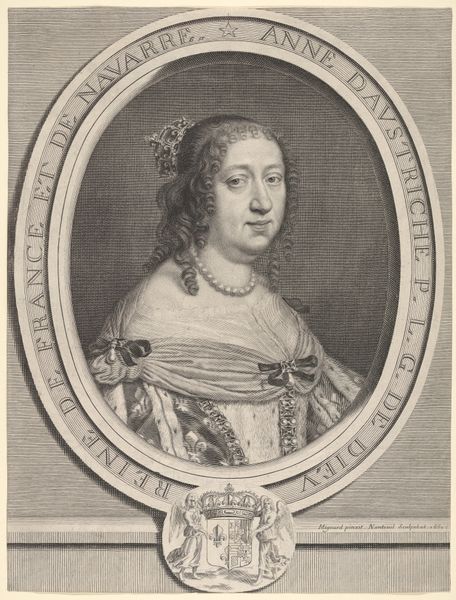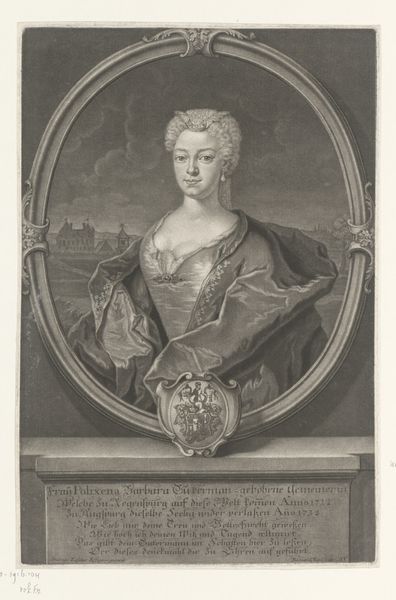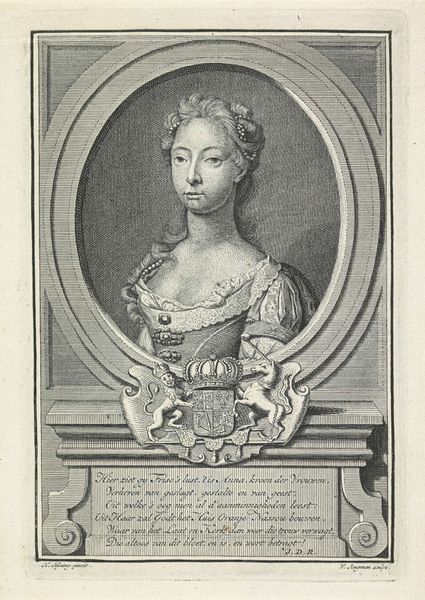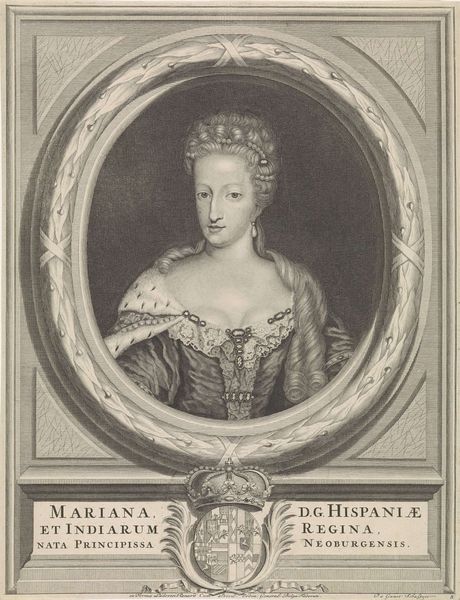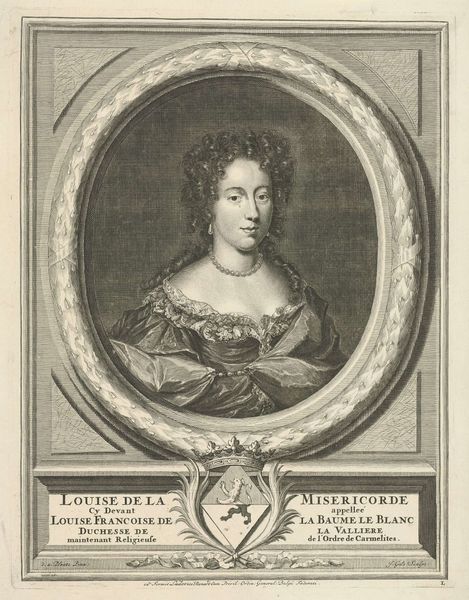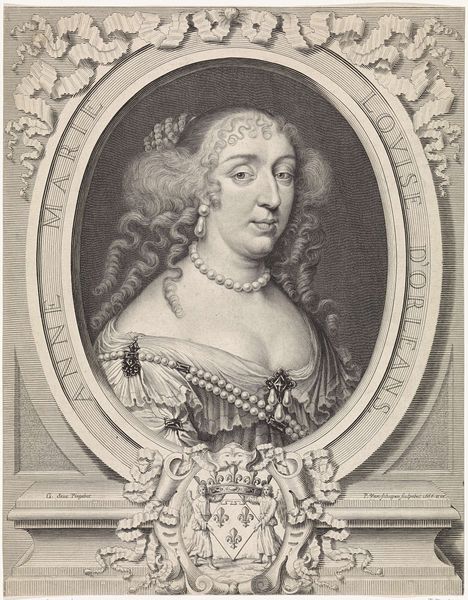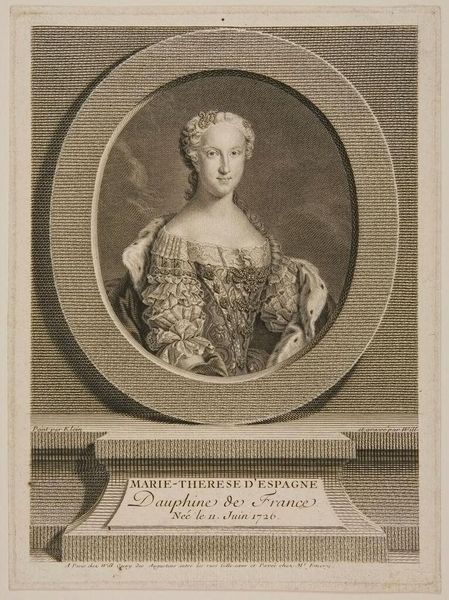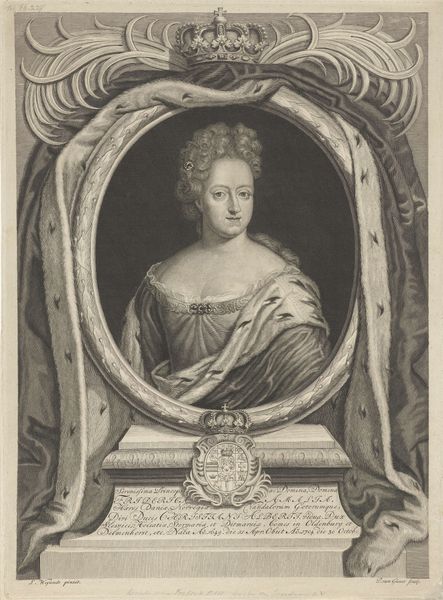
Copyright: CC0 1.0
Curator: This is Georg Friedrich Schmidt's portrait of Magdalena Sophia Wiegerin. Schmidt, born in 1712, was a master of the burin, evident in the meticulous detail here. The work presents a fascinating study of class and identity in the 18th century. Editor: Wow, she looks so...solid. Like a marble statue come to life, but with a hint of melancholy. The drapery around her seems almost like a shroud, framing her face. Curator: The framing is deliberate. It places her within a constructed space, reinforcing her social standing, her belonging to a particular lineage and order. We should also note that this portrait came after her passing in 1738. Editor: Death is always such a drama, isn’t it? Suddenly, everyone wants your portrait done. Maybe it’s the ultimate status symbol: "I’m so important, even death couldn’t stop me from being fabulous." Curator: Or perhaps it's about memorializing a woman within the strict confines of societal expectations. The symbols below – the crest and the inscription – offer a glimpse into her world, her family, and her legacy. Editor: I wonder what she would have thought of all this fuss? Did she have a secret love of gardening or maybe a hidden talent for telling jokes? We’ll never know. Curator: Indeed. Art history is always an interpretation, an ongoing negotiation between what we see and what we can know. Editor: I suppose that’s the beauty of it, isn’t it? We get to keep imagining the untold stories.
Comments
No comments
Be the first to comment and join the conversation on the ultimate creative platform.
